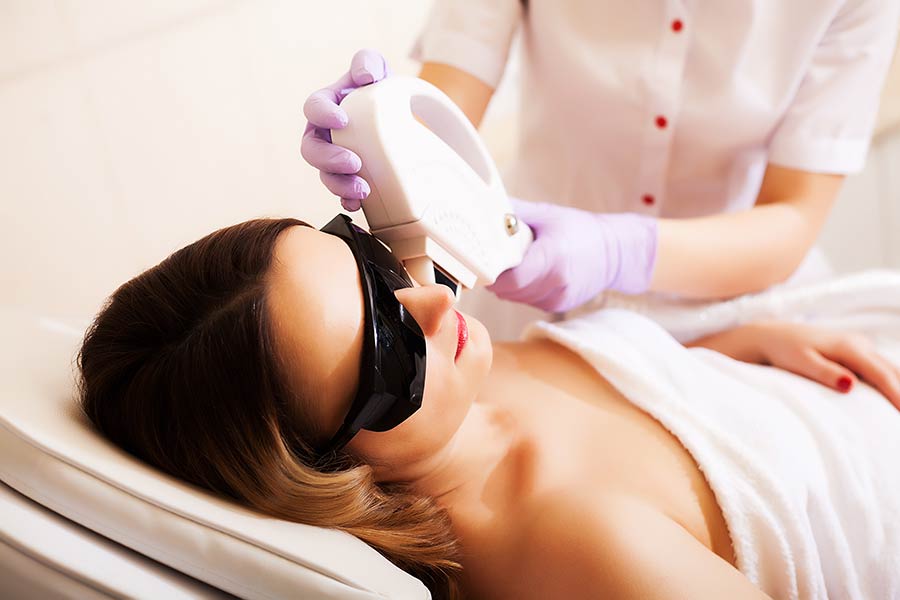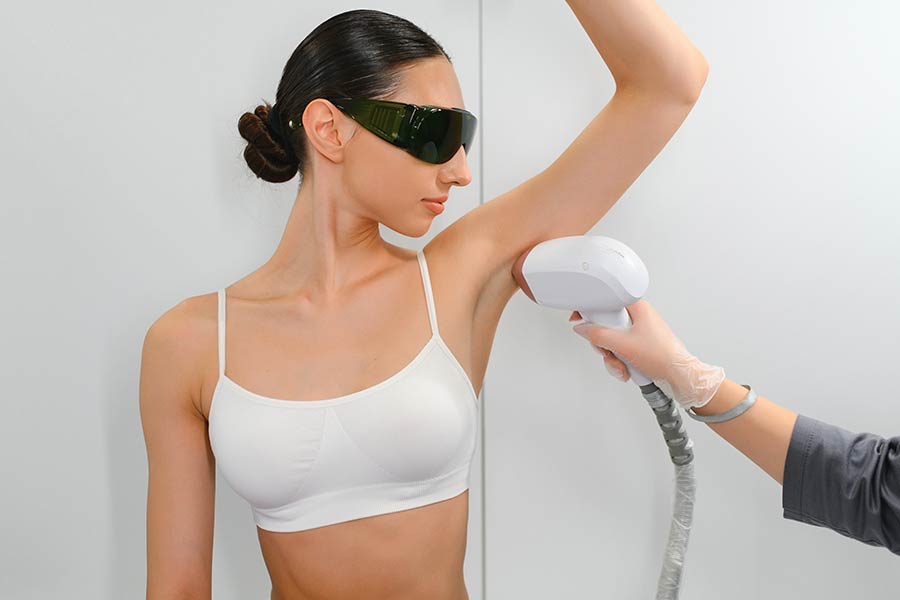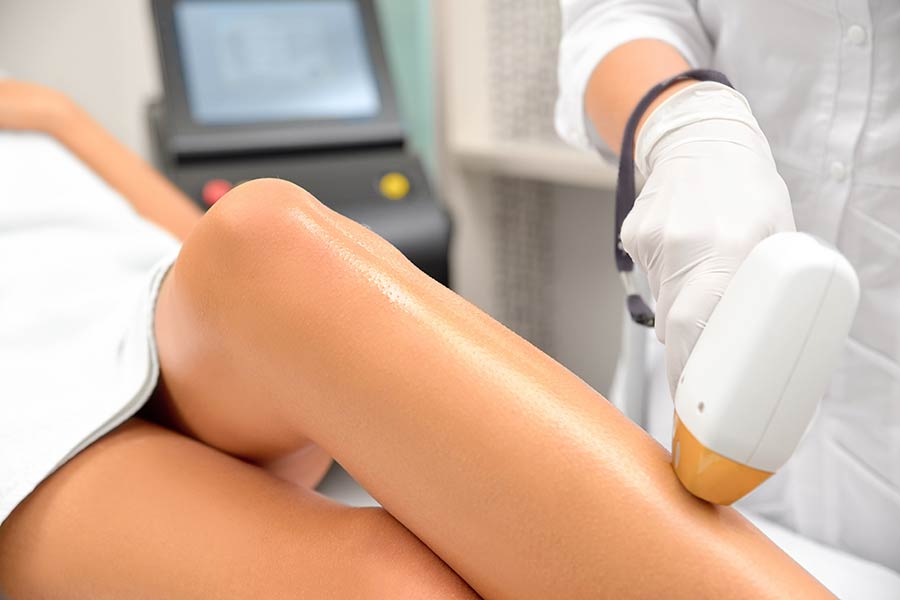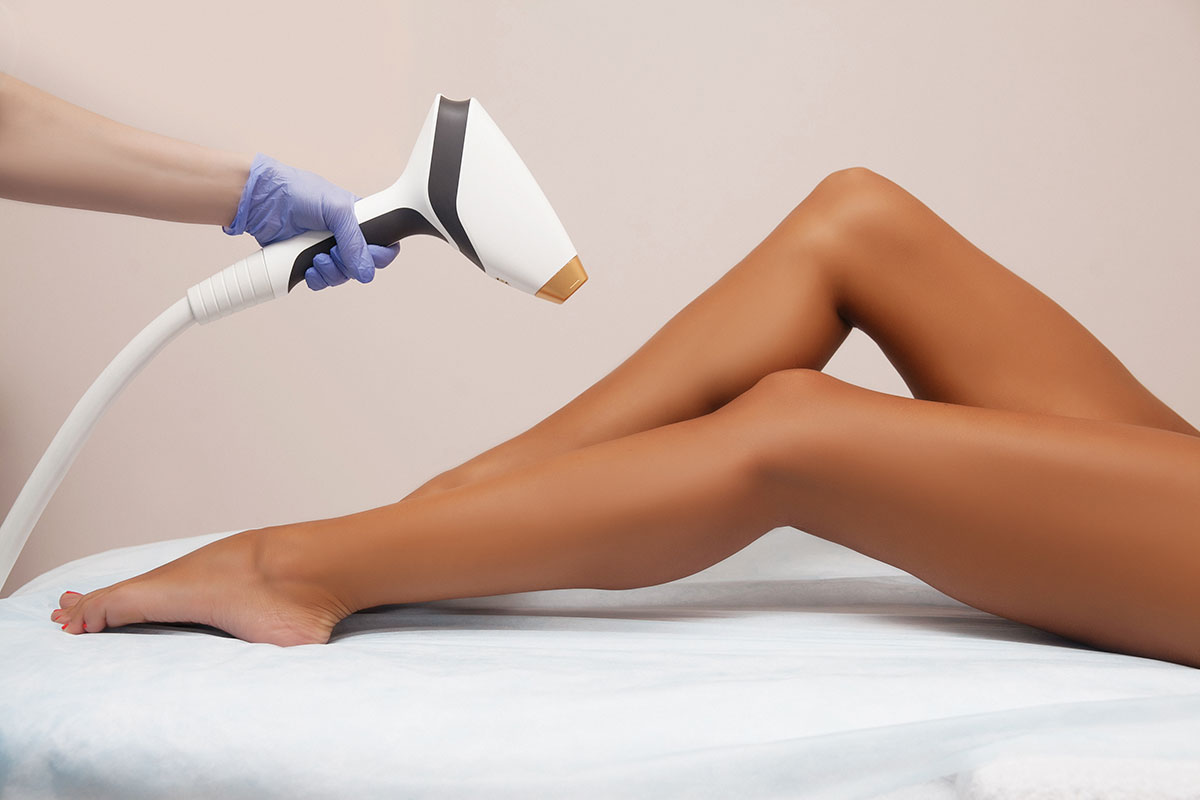Ever wondered about zapping away unwanted hair for good? You're not alone. The quest for smooth skin isn't new; it dates back to ancient Egypt, where copper razors did the job. Fast forward to today, and we've got laser hair removal - a high-tech solution that promises long-lasting results. But here's the burning question (pun intended): does it hurt? We'll shed light on the sensation, compare it with traditional methods, and give you the lowdown on managing any discomfort. Whether you're a laser newbie or considering another round, understanding the ins and outs can make all the difference.
Key Takeaways
- Laser hair removal can cause discomfort, but pain levels vary greatly among individuals and depend on the treatment area.
- Comparing pain to a rubber band snapping against the skin can help set realistic expectations for those considering the procedure.
- Personal experiences highlight the importance of professional skill and technology in minimizing pain and ensuring a smoother process.
- Techniques to reduce discomfort, such as cooling methods and numbing creams, are crucial for a more comfortable experience.
- Aftercare plays a significant role in enhancing comfort and reducing potential side effects post-treatment.
- Setting realistic expectations about pain, procedure duration, and results is essential for satisfaction with laser hair removal.
Understanding Laser Hair Removal
Process Overview
Laser hair removal works by targeting hair follicles with laser energy. This energy heats the follicles to stop new hairs from growing. A typical session involves cleaning the area, applying a cooling gel, and using the laser device on the targeted skin. Most people need multiple sessions for optimal results. This is because hair grows in cycles, and not all hairs are in the same phase at any given time.
Technology Advances
Recent years have seen big improvements in laser technology. These advances make treatments more comfortable for patients. Now, many devices come with cooling mechanisms to reduce discomfort during the procedure. Also, newer lasers can treat a wider range of skin and hair types. This inclusivity means more people can benefit from laser hair removal than ever before.
Treatment Areas
Face and Neck
The skin on the face and neck is sensitive. That's why precision is key in these areas. Smaller laser heads are often used here for accuracy. Most people describe the pain as mild to moderate. But everyone's pain threshold is different.
Body Parts
Legs, arms, and backs are among the most commonly treated body parts. Pain levels can vary depending on which part of the body is being treated. Larger areas like the back may take longer but don't necessarily hurt more than smaller areas.
Safety Measures
Safety is crucial in laser hair removal. Protective eyewear is a must to safeguard eyes from laser light. Trained professionals should always oversee treatments to ensure safe laser settings are used. Before starting full treatments, a patch test on a small skin area checks for any adverse reactions.
Pain Perception in Laser Treatments
Pain Factors
Hair density and color play a big role in how much laser hair removal might hurt. Darker and thicker hair absorbs more laser energy, leading to higher discomfort. The intensity of the laser also matters. Higher settings can make the treatment more effective but might increase pain.
Skin sensitivity is another key factor. People with sensitive skin may feel more pain during laser treatments. It's important to discuss any concerns with your practitioner before starting.
Individual Tolerance
Everyone's pain tolerance varies. What feels like a mild warmth to one person could be quite uncomfortable for another. Personal pain thresholds greatly influence how we perceive discomfort during laser hair removal.
It's crucial to communicate openly with your practitioner about pain levels. They can adjust the treatment accordingly, ensuring a balance between effectiveness and comfort.
Area Sensitivity
Bikini Line
The bikini area is very sensitive but remains a popular choice for laser hair removal. Achieving a balance between effective hair removal and managing discomfort is essential here. Numbing creams are often used to lessen the pain, making the process more bearable for many.
Underarms
Underarm treatments are quick due to the small area involved but can be relatively painful because of dense hair growth. Despite this, many choose underarm laser hair removal for its long-term benefits, such as reduced hair growth and smoother skin.
Comparing Pain Levels
Laser vs. Waxing
Many people worry about the pain level of laser hair removal. They often compare it to waxing, a common hair removal method. Laser treatments might feel like a rubber band snapping against your skin. This sensation is brief and happens as the laser targets hair follicles.
Waxing, on the other hand, causes a more immediate pain. This pain is sharp but goes away quickly. Unlike waxing, laser treatments offer a long-term reduction in hair growth. Over time, you need fewer sessions. This means less overall discomfort for you.
Another benefit of laser over waxing is smoother skin texture. Lasers can help reduce ingrown hairs, leaving your skin feeling soft and looking clear.
Different Lasers
There are various types of lasers used in hair removal, such as Alexandrite and Diode lasers. Each type works best for different skin and hair colors. Choosing the right laser is key to minimizing discomfort during treatment.
Newer laser models come with features designed to reduce pain. Some have cooling mechanisms that soothe the skin immediately after the laser pulse. This advancement makes the process more comfortable than before.
It's important to consult with a professional who can recommend the best laser option for you. They will consider your hair color, skin type, and sensitivity levels.
Skin Types
Darker skin types may experience more sensitivity during laser treatments due to higher melanin absorption. It's crucial to use the appropriate laser type for your skin to minimize risks and discomfort.
Advancements in technology now allow safer treatments for all skin types. Innovative lasers can accurately target hair follicles without damaging surrounding tissue. This reduces the risk of side effects like burning or discoloration.
Professionals can adjust settings on these advanced machines to suit individual needs, making the procedure safer and more comfortable for everyone.
Personal Experiences Shared
First-time Sessions
Many people feel nervous before their first laser hair removal session. This anxiety can make the experience seem more painful than it is. The process starts with a skin assessment to ensure safety and effectiveness. Then, a patch test may be conducted.
The first time might feel uncomfortable due to the new sensation. It's like a rubber band snapping against the skin. But this feeling decreases as one gets used to it.
Ongoing Treatments
With each session, discomfort tends to lessen. This happens as hair becomes finer and easier for the laser to target. Technicians adjust laser settings based on how well you're responding to treatment.
Regular sessions are crucial for less pain and better results. They help maintain progress and reduce discomfort over time.
Different Body Areas
Pain levels vary across body areas. Sensitive spots like the bikini line often hurt more than others. Skin thickness and nerve density play roles in this difference.
To ease pain in sensitive areas, technicians use special techniques. Cooling gels or ice packs are common methods.
Professional Insights
Expert Opinions
Dermatologists agree that laser hair removal is safe and effective. They point out that the technology targets hair follicles without damaging surrounding skin. "It's a precise method that can yield significant long-term hair reduction," says Dr. Jane Smith, a leading dermatologist.
Experts suggest preparing for treatments by avoiding sun exposure and not waxing. They also recommend shaving the area a day before. This helps minimize discomfort during the procedure. Most professionals believe that the benefits of smooth, hair-free skin outweigh the temporary discomfort many experience.
Pain Management Techniques
To reduce pain, many clinics use topical numbing creams before starting laser treatment. These creams help dull the sensation on the skin's surface, making the procedure more comfortable for patients.
After treatment, cooling gels and ice packs are often applied to soothe any irritation. This practice not only helps with discomfort but also reduces redness and swelling. Some patients find relief in using breathing techniques or squeezing stress balls during their sessions to distract from any pain.
Aftercare Advice
Post-treatment care is crucial for ensuring a smooth recovery. Dermatologists strongly advise against sun exposure on treated areas to prevent skin damage. They recommend covering up or using a high-SPF sunscreen if going outdoors is unavoidable.
Applying soothing lotions or aloe vera can calm the skin effectively. These products provide relief from irritation and speed up healing. It's also important to avoid hot showers, baths, and saunas immediately after treatment as they can increase discomfort and inflammation.
Minimizing Discomfort
Pre-treatment Tips
Before undergoing laser hair removal, certain steps can make the process smoother and less painful. Shaving the area 24 hours before treatment can significantly reduce discomfort. This is because the laser targets hair roots, and shorter hairs mean less heat on the skin's surface.
Avoiding sun exposure and tanning beds for at least two weeks prior is crucial. Tanned skin can lead to more pain during treatment. It's also important to steer clear of certain skincare products. Products containing retinol or glycolic acid can increase skin sensitivity.
Lastly, a conversation with your practitioner about any medications you're taking is essential. Some medications can make your skin more sensitive to the laser.
During Treatment Strategies
Practitioners often use dynamic cooling devices to protect the skin and minimize pain during laser application. These devices cool the skin just before each laser pulse, making the treatment more comfortable.
If the discomfort becomes too intense, don't hesitate to ask for short breaks. This can help manage pain better throughout the session.
Open communication with your practitioner is key. If you're experiencing too much pain, they can adjust the laser settings. This ensures a balance between effectiveness and comfort.
Post-treatment Care
After treatment, it's normal to experience some redness and swelling in the treated area. Gentle skincare is advisable during this time. Use mild cleansers and moisturizers to soothe your skin.
Avoiding strenuous physical activities for a couple of days post-treatment helps prevent irritation in the treated area. Sweat can exacerbate discomfort and slow down healing.
Following your practitioner's specific aftercare instructions is crucial for achieving the best results and minimizing discomfort. They might recommend specific products or routines tailored to your skin type and treatment area.
Role of Technology and Technique
Latest Machines
The world of laser hair removal has seen significant advancements in technology. Nowadays, machines come with improved cooling mechanisms. This innovation is crucial. It makes the process less painful by protecting the skin's surface while targeting hair follicles.
New models are also capable of delivering treatments faster. This means less time under the laser and, consequently, less discomfort for you. Moreover, these advanced machines can safely treat a broader range of skin and hair types. This inclusivity ensures more people can benefit from laser hair removal without worrying about pain or safety.
Skilled Practitioners
Finding an experienced practitioner is key to a safe and effective treatment. They know how to handle the equipment properly. This expertise significantly reduces the chances of discomfort during the procedure.
Skilled technicians understand that everyone's pain tolerance is different. They adjust treatments accordingly. Their ability to use the right technique minimizes discomfort effectively. The role of practitioner expertise cannot be overstated when it comes to reducing pain during laser hair removal.
Treatment Customization
Customizing laser settings based on your specific skin and hair type leads to optimal results with minimal discomfort. Before starting, practitioners assess your needs thoroughly. This assessment helps them determine the most effective treatment plan for you.
As your sessions progress, there's flexibility in adjusting treatment parameters as needed. This approach ensures that you're always receiving care tailored to your body's response, further minimizing any discomfort.
Aftercare for Enhanced Comfort
Immediate Aftercare
After laser hair removal, your skin needs tender care. Applying cool compresses can be a game-changer. They reduce both discomfort and swelling. Just remember, gentleness is key.
Doctors advise against makeup or deodorant on the treated areas. This should be followed strictly for at least 24 hours. It helps prevent irritation.
Gentle cleansing is also crucial. Use mild soap and water. Avoid scrubbing the area too hard. This prevents further irritation of the skin.
Long-term Skin Care
To keep your skin happy after laser treatment, moisturize regularly. It keeps the skin soft and healthy. Look for lotions that are gentle and free from harsh chemicals.
Sunscreen becomes your best friend post-treatment. Apply it daily to protect the treated areas from UV damage. Choose one with at least SPF 30.
Avoid harsh chemical exfoliants on treated areas. They can cause more harm than good. Stick to gentle skincare products to maintain your skin's health.
Setting Realistic Expectations
Treatment Outcomes
When you decide to undergo laser hair removal, it's important to know what to expect. The primary outcomes include a significant reduction in hair growth and smoother skin. However, these results don't happen overnight. They unfold gradually, with the most noticeable effects becoming visible after several sessions. Many people see a drastic decrease in hair density and thickness as they progress through their treatment plan.
It's also common to need touch-up sessions occasionally. These help maintain the smooth, hair-free results over time. Touch-ups are especially useful for tackling any new hair growth that might appear due to hormonal changes or other factors.
Pain vs. Results
Yes, there is some discomfort during laser hair removal, but it's temporary and often described as a quick snapping sensation against the skin. Despite this, many patients report that the brief moments of discomfort are well worth the long-term benefits. Testimonials often highlight how the trade-off between temporary pain and enduring hair-free skin is a no-brainer for them.
The key benefits go beyond just aesthetic improvements; they encompass significant boosts in self-confidence and convenience. Imagine not having to schedule regular waxing appointments or deal with razor burns anymore. This convenience factor is a huge plus for many people.
Timeline for Results
Typically, you'll start seeing noticeable results after 2-3 sessions of laser hair removal. This is because the treatment works by targeting hairs in their active growth phase, and not all hairs are in this phase at the same time. As you continue with more sessions, you'll notice a cumulative effect leading to substantial hair reduction.
For the best outcomes, it's crucial to stick to the recommended treatment schedule suggested by your specialist. Skipping sessions or spreading them too far apart can affect how effectively the treatment reduces your hair growth.
Summary
Laser hair removal? Sure, it might pinch a bit, but it's not the big bad wolf of beauty treatments. We've walked you through the what's-what, from the tickle to the sting, and everything in between. With the right pros and a bit of prep, you're looking at smoother sailing. And hey, those personal stories and expert tips we shared? They're your secret weapon against the ouch. Plus, with tech getting better by the day, that "yikes" factor is dropping fast. So, keep your chin up and your aftercare game strong. You've got this.
Ready to take the plunge? Remember, it's all about finding the right spot with pros who know their stuff and making sure you're comfy every step of the way. Dive into laser hair removal with confidence, knowing you're armed with all you need to minimize the ouch and maximize the smooth. Let's get zapping!
Frequently Asked Questions
Does laser hair removal hurt?
Everyone's pain threshold is different, but many describe it as a rubber band snapping against the skin. It's quick and some areas are more sensitive than others.
How do professionals minimize discomfort during laser hair removal?
Professionals often use cooling methods or numbing creams to ease any discomfort. The right technique and technology also play a big role in reducing pain.
What role does technology play in the pain level of laser hair removal?
Advancements in technology have made laser hair removal less painful. Modern lasers can target hair more efficiently while minimizing skin irritation.
Can personal experiences with laser hair removal vary widely?
Absolutely! Some folks breeze through sessions with minimal fuss, while others might find certain areas more ticklish or sensitive. It's all about your unique pain tolerance.
What aftercare tips can enhance comfort post-laser hair removal?
Keeping the treated area cool and moisturized is key. Avoid heat and friction, and treat your skin like the delicate flower it is for a day or two.
How important is setting realistic expectations before getting laser hair removal?
Super important! Knowing what to expect helps you prepare mentally and physically, making the experience smoother. Remember, it’s a marathon, not a sprint to smoothness.
Can technique impact the discomfort level during laser treatments?
Definitely. A skilled professional knows how to work swiftly and efficiently, making the process as comfortable as possible. Technique matters as much as technology.












